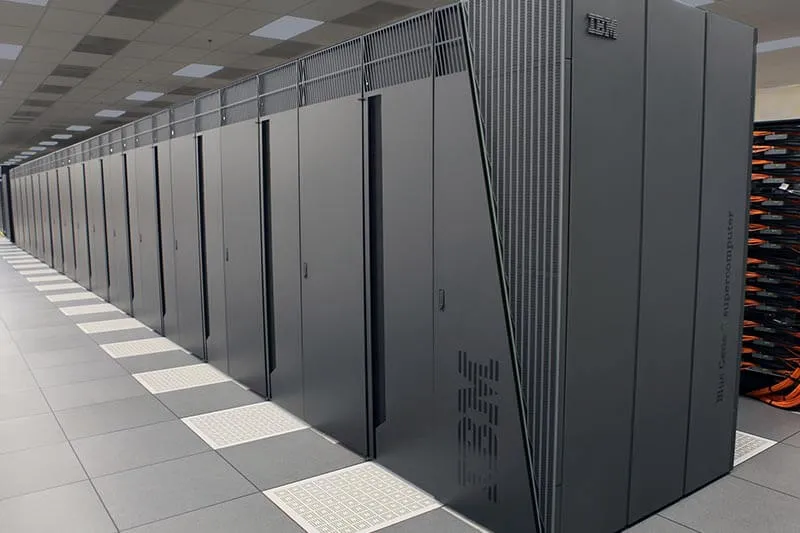How to Fight Resistance and Introduce New Software

Digital transformation and globalization have radically changed the way we do business.
In such a fast-paced, hyper-competitive environment in which little startups can outperform monolithic giants in terms of innovation, companies are re-thinking their business model.
The main triggers of this transformation are speed, seamless integration and acquisition, on-demand services, and the necessity to offer multiple touchpoints. People expect to be able to access products or services whenever they want and wherever they want without any constraints or friction.

The whole strategy now revolves around the basic concept of customer experience and change is triggered by the evolution of the customer journey.
In order to be competitive, firms need to work with lean processes that guarantee a rapid rate of adaptation to fluctuating, albeit global, demand and introduce technology that facilitates digital disruption.
Even smaller entities are now required to work with global partners and suppliers in order to be competitive and find the most efficient and value-adding solution to each step of the supply chain.
This disruption forces people to accept and comply with an array of new rules, while they need to learn how to interact with new tools and procedures.
The question is…how can companies optimize the implementation of new technology?
And how can employees quickly adapt to continuous changes?

Digital transformation is a change in management mentality that affects operations and approach in every unit of a business. Therefore, the first obstacle to change management is moving away from old models and redesign the entire business strategy around customer experience.
Once management is ready to revolutionize their business strategy and the structure of the company is aligned with the new approach, the second obstacle is represented by internal resistance to change. Digital disruption is a business strategy, but it requires businesses to change processes and implement plenty of new applications in different sectors. And this can lead employees to show resistance to change.
Let’s look at some of the areas that are being transformed by new software solutions and then we can see how a simple tool can facilitate the introduction of new applications and procedures in companies that are going through digital transformation.
Table of Contents
A Long Time Ago in an Office Far, Far Away
What was your workplace like just a few years ago?
Mentioning the word ‘office’ will most likely bring very specific pictures to mind: Your desk, a computer monitor, your personal stapler that even has your name written on a piece of tape to prevent Thomas from accounting to steal it again, some drawers, pens, and maybe a picture of your family in a silver frame.
You immediately recall your colleagues talking about the game they watched on the weekend sitting across from you, a coffee machine in the kitchen, powerpoint presentations, and a noisy printer on top of a file cabinet.
And if you try to recall your computer desktop, the first thing that might pop into your mind is a blue icon that would open your text editor (or a green one that would allow you to work on your spreadsheets) and a few other programs you would open from time to time to place orders, draw charts, contact clients, book a meeting room, or retouch an image of your colleague taken at the latest company event as a prank.

Does this sound familiar?
Things are about to change. And many firms have already embraced these changes!
Changes in the Office Space and New Collaboration Tools
The main goals of a solid digital strategy are increasing productivity and reducing costs in order to manage lean operations that can quickly adapt to customer’s expectations.
Collaboration is one of the the first areas affected by this transformation. Flexibility is key, and offsite working arrangements are the first source of change.
Companies can save money by allowing employees to work from home. What was once considered a risk has now been proven to be beneficial. Firms can limit the footage of their office space or work in shared work spaces and create an environment in which employees only come to work on specified days and take a free desk that is shared with others who, in turn, work from home.
Additionally, teleworking arrangements and remote working solutions allow companies to employ the best talents independently from where they are actually located.

Companies like Toptal, Buffer, and partially also TELUS have hundreds of employees but little to no office space. That saves costs, eliminates geographic constraints during the hiring process, and people who work in a familiar environment that is shaped around their needs are generally more productive.
In order to manage this new form of collaboration, companies had to introduce a series of communication and collaboration tools that compensate for the lack of face-to-face interaction.
Real-time collaboration boards and applications are replacing meetings and allow remote teams to work together and coordinate efforts.
Cloud Solutions and Virtualization of Services
The idea is that a company needs to be able to face new challenges at any time, react quickly, and scale up to meet new requirements instantly.
Gone is the idea of inflexible infrastructure built around standard operations. Everything needs to be on demand and rapidly scalable. Hardware and software infrastructure need to adapt in real time to the moving goalposts of a flexible and lean strategy.
IaaS, PaaS, and SaaS solutions are swiftly replacing rigid elements that were standard business solutions just a few years back.

Outsourcing IT infrastructure to companies that can quickly adapt speed and capacity based on your current needs and leveraging cloud solutions for efficiency and computing power are basic concepts that are disrupting the entire ecosystem.
This revolution comes with all sort of new cloud applications and services that pushed companies to create tailored software and hardware solutions in a flexible environment that forces employees to challenge themselves with new pieces of software on a daily basis.
Automation
A very hot topic connected to digitization is automation.
It’s not a secret that robots can outperform humans in basically any field nowadays. From data mining to analysis, communication, and decision-making processes, the need for speed and accuracy leads company to adopt cloud computing and automation to optimize every single processes within their operations.
From accounting to sales, strategic decisions need to be data-driven in order to reduce potential wastes and save time.
Every process can basically be automated, and this leads to new roles and definitions in the workplace.
Some jobs are not longer necessary and if, on the one hand, we can look into the debate on whether or not this might be bad for the economy, on the other, digitization is taking away some of driest and most repetitive tasks and leaving room for a series of new positions that are connected to our unique skills as humans.
In a way, automation is helping us discover the true values connected to our creativity and ability to interact with other human beings. Emotions and tact are core capabilities of our human experience and these precious skills are becoming assets in a society that struggles to define and convey trust in new services.
Introducing automation can streamline operations, but, once again, the process is linked to a series of new tools and procedures that employees need to adapt to.
Paperless Communication and New Software Solutions
The vision of a paperless office seems to be still far-fetched in some fields. Especially in those sectors which are highly regulated and still need lots of red tape with official seals and signatures.
However, most of the modern tech companies move in a fast-paced environment that involves quick communication.
This necessity spurned several new applications that replaced paper. Companies now work with efficient solutions that allow documentation to be directly produced digitally. Messaging systems, virtual white boards, calendars, kanban boards, virtual notepads…everything we produce is now digitally native.
Our meetings involve a screen to talk to our colleagues in Rio while a bot automatically takes the minutes and updates our project goals in our project management application and we communicate in chats or send instant messages to colleagues while chatbots talk to potential customers through social media and collect business intelligence data within smart CRM solutions…

Quarterly reports can be generated with a simple click and we can access sales figures in real time even while eating peanuts on a plane.
Everything is being digitized and the amount of available data requires us to introduce even more applications to be able to visualize and interpret all the information we collect.
Companies keep introducing newer and smarter software solutions that automatically update their interface based on contingent needs.
This translates into efficiency and accuracy. The downside is that people have to learn how to work with a whole new set of applications that keep changing over time.
No wonder why digital transformation is often hindered by internal resistance to change!
How to Adapt and Quickly Introduce New Technology at Work
Since everything is currently being automated, it’s obvious that even the process of introducing new technology and bringing people up to speed needs to be optimized and digitized.
In the past, companies rolled out new processes or software applications at a much slower pace, and their lifetime cycle would be very long due to the initial investment and integration efforts.
A digital strategy requires businesses to introduce always newer and more complex applications with very high frequency.
Training staff on new software and procedures is becoming too costly and time-consuming. Since people need to be trained constantly, efficiency and productivity decrease while costs for implementing new solutions and instructing people skyrocket.

The simple solution to the problem is software that explains itself to the users.
Exactly as cars nowadays come with an embedded navigation system that directs the driver to their destination, software now comes with on-screen guides that show users how to accomplish tasks in real time and within the same interface.
The best way to solve problems connected to inefficiencies and resistance to digital transformation is bypassing the whole learning process and enabling people to interact with brand new applications without any training or previous knowledge.

Userlane’s technology is revolutionizing the enterprise world with its on-screen, interactive walkthroughs that allow anybody to use any piece of software at any time without any formal training.
If introducing new applications is a necessity, the process needs to be facilitated through automation.
Userlane allows companies to enter the era of digital disruption effortlessly. While companies can cut costs connected to training and maintenance of learning material, they also profit from increased productivity.
Each and every employee is fully operative within every new piece of software from the very instant in which the firm decides to implement it.
Additionally, when employees feel insecure about a specific task or process, they don’t need to abandon the platform they’re working on because their virtual assistant is always present in the system and allows them to recall guides that support them while they actually fulfill their tasks.
The world is changing rapidly and Userlane allows people to adapt promptly and immediately acquire all the skills which are necessary to be competitive in the era of digital transformation.


